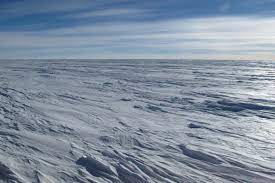“Enduring the Extreme: Exploring the Coldest Place on Earth”

The Earth is a planet of extremes, featuring landscapes that range from scorching deserts to icy tundras. Among the coldest places on Earth, one location stands out as the epitome of frigidity: Antarctica, specifically the high ridge of the East Antarctic Plateau. This remote and most coldest place in worlddesolate region is home to the lowest temperatures ever recorded on our planet, making it a fascinating and challenging environment to explore.
The East Antarctic Plateau:
Situated near the center of the East Antarctic Plateau, the coldest place on Earth lies at an altitude of around 3,500 meters (11,500 feet) above sea level. This desolate and inhospitable landscape experiences extreme cold due to its high elevation, clear skies, and dry air. The combination of these factors allows the region to radiate heat quickly, resulting in bone-chilling temperatures that plummet to record lows.
Temperature Extremes:
The coldest temperature ever recorded on Earth was in this region at the Soviet Union’s Vostok Station. On July 21, 1983, the mercury dipped to a mind-numbing -128.6 degrees Fahrenheit (-89.2 degrees Celsius). These staggering temperatures make the East Antarctic Plateau an unparalleled testament to the harshness of Earth’s climate. Such extreme cold poses significant challenges to both human and natural systems, with the air so frigid that it can freeze exposed skin in a matter of minutes.
Atmospheric Conditions:
The atmospheric conditions in the coldest place on Earth contribute significantly to its extreme temperatures. The East Antarctic Plateau is characterized by persistent high-pressure systems and clear skies, allowing for efficient radiational cooling. During the long polar night, which lasts for several months, the lack of sunlight exacerbates the chilling temperatures, creating an environment where even the air itself becomes a formidable adversary.
Wildlife Adaptations:
Despite the harsh conditions, certain species of wildlife have adapted to thrive in the extreme cold of Antarctica. Penguins, seals, and other marine life have evolved unique physiological and behavioral adaptations to survive in this unforgiving environment. Their thick layers of blubber, insulating fur, and specialized blood circulation systems enable them to endure the freezing temperatures while hunting for food in the surrounding icy waters.
Scientific Exploration:
The extreme conditions of the East Antarctic Plateau make it a prime location for scientific research, particularly in the field of climate studies. Researchers from around the world brave the harsh environment to gather data on climate change, glacial dynamics, and atmospheric processes. Understanding the intricacies of this cold and isolated region is crucial for comprehending the broader implications of climate change on a global scale.
Vostok Station:
The Vostok Station, situated on the high ridge of the East Antarctic Plateau, holds a special place in the history of polar exploration. Established by the Soviet Union in 1957, it has been the site of numerous groundbreaking scientific discoveries. In addition to recording the lowest temperature on Earth, Vostok Station has provided valuable insights into the Earth’s climate history through ice core drilling, revealing ancient atmospheric compositions and climatic conditions.
Challenges of Exploration:
Exploring the coldest place on Earth poses unparalleled challenges to scientists and adventurers alike. The extreme temperatures demand specialized equipment and clothing, and even then, the risk of frostbite and hypothermia is ever-present. The remoteness of the region further complicates logistical efforts, requiring meticulous planning and the use of advanced technology to ensure the safety and success of expeditions.
Conclusion:
The coldest place on Earth, nestled in the heart of the East Antarctic Plateau, serves as a stark reminder of the planet’s diverse and extreme climates. While the bone-chilling temperatures and harsh conditions make it an inhospitable landscape for most life forms, it remains a vital arena for scientific exploration and discovery. The challenges faced by those who venture into this frigid wilderness underscore the resilience of the human spirit and the importance of understanding Earth’s most extreme environments in the face of a changing climate. Antarctica’s frozen expanses continue to captivate the imagination and curiosity of scientists, pushing the boundaries of human knowledge in the pursuit of unraveling the mysteries of our planet.
-
Where is the coldest place on Earth located?
- The coldest place on Earth is situated in Antarctica, specifically on the high ridge of the East Antarctic Plateau.
-
What factors contribute to the extreme cold in this region?
- The extreme cold in the East Antarctic Plateau is attributed to its high elevation, clear skies, and dry air. These factors allow for efficient radiational cooling, resulting in record-breaking low temperatures.
-
What is the lowest temperature ever recorded in the coldest place on Earth?
- The lowest temperature ever recorded in this region was -128.6 degrees Fahrenheit (-89.2 degrees Celsius) at the Soviet Union’s Vostok Station on July 21, 1983.
-
How does the atmosphere in the East Antarctic Plateau contribute to its extreme temperatures?
- The region experiences persistent high-pressure systems and clear skies, allowing for rapid heat loss. During the polar night, the lack of sunlight intensifies the cold, creating an environment where temperatures plummet to extraordinary lows.
-
What wildlife can be found in the coldest place on Earth?
- Despite the extreme conditions, certain species have adapted to thrive in Antarctica, including penguins, seals, and various marine life. These animals have evolved unique adaptations to survive in the harsh climate.
-
Why is the Vostok Station significant in the study of the coldest place on Earth?
- The Vostok Station, established by the Soviet Union in 1957, holds historical importance as the site where the lowest temperature on Earth was recorded. It has also been crucial for scientific research, particularly in climate studies, through ice core drilling.
-
What challenges do scientists face when exploring the coldest place on Earth?
- Scientists and explorers encounter numerous challenges, including extreme temperatures, logistical difficulties, and the risk of frostbite and hypothermia. Specialized equipment and meticulous planning are essential for safe and successful expeditions.
-
How is the coldest place on Earth contributing to climate change research?
- The East Antarctic Plateau serves as a prime location for climate change research. Scientists gather data on glacial dynamics, atmospheric processes, and climate history through ice core drilling, contributing to a better understanding of global climate patterns.
-
Are there any permanent research stations in the coldest place on Earth?
- Yes, the Vostok Station is a permanent research station on the East Antarctic Plateau. It has been a hub for various scientific endeavors, including meteorology, geophysics, and astronomy.
-
How can one visit or explore the coldest place on Earth?
- Visiting the coldest place on Earth requires careful planning and adherence to strict safety measures. Expeditions are typically conducted by scientific teams with specialized equipment and support systems. Tourist visits to such extreme environments are limited and highly regulated to minimize environmental impact.






